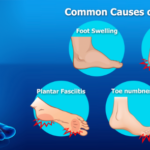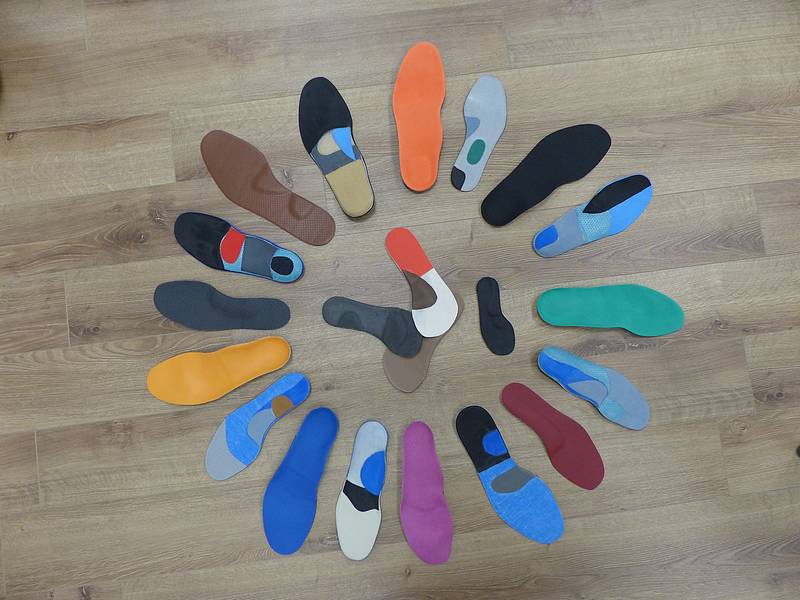Orthopedic insoles for flat feet have revolutionized foot care, catering specifically to individuals experiencing discomfort due to fallen arches or overpronation. These specialized insoles provide targeted support, offering relief from pain and enhancing overall foot health.
Understanding Flat Feet
Flat feet, also known as pes planus, is a condition where the arches of the feet collapse, causing the entire sole to touch the floor when standing. This can lead to discomfort, pain, and difficulty in performing daily activities.
The arches of the feet act as shock absorbers, distributing body weight evenly across the feet and supporting movements like walking and running. However, in individuals with flat feet, these arches are lower or nonexistent, resulting in the feet appearing flat on the ground.
There are two types of flat feet: flexible and rigid. Flexible flat feet have arches that appear when not bearing weight, but flatten when standing. Rigid flat feet, on the other hand, maintain a flattened position regardless of weight-bearing or non-weight-bearing activities.
Flat feet can be congenital, meaning they’re present from birth due to the structure of the feet. They can also develop over time due to factors like aging, injury, obesity, or prolonged standing.
While many individuals with flat feet do not experience any symptoms or discomfort, some may encounter issues like pain in the feet, ankles, or lower legs. This discomfort might worsen with prolonged activity or standing.
Orthopedic insoles, also called orthotics, are commonly used to alleviate the discomfort associated with flat feet. These specialized inserts provide support, cushioning, and alignment, helping distribute weight evenly and reducing strain on the feet and lower limbs.
Understanding flat feet involves recognizing the structure of the feet and how the absence or collapse of arches can impact mobility and comfort. Management of flat feet often involves the use of orthopedic interventions, proper footwear, exercises to strengthen the muscles supporting the arches, and, in severe cases, medical intervention or surgery.
Choosing the Right Insoles
Understanding Your Arch Type with Atlas Arch Support
The Atlas Arch Support is designed to provide comprehensive support across various arch types. Whether you have low, medium, or high arches, these insoles offer adaptable support that aligns with your specific foot structure. Their versatility makes them suitable for a wide range of foot shapes, ensuring proper alignment and comfort.
Materials and Atlas Arch Support
Insoles with Atlas Arch Support often incorporate innovative materials that prioritize both comfort and functionality. These materials aim to deliver cushioning, stability, and flexibility, catering to different foot needs while offering enhanced arch support.
Specific Design Incorporating Atlas Arch Support
The design of insoles with Atlas Arch Support is engineered to target and alleviate discomfort associated with different arch types. They often feature specialized contours and shapes that effectively distribute pressure across the foot, providing targeted support to the arch area and promoting natural foot alignment.
Customization with Atlas Arch Support
Some insoles featuring Atlas Arch Support offer customization options. These may include adjustable arch heights or inserts that allow you to tailor the level of support according to your comfort preferences. This customization aspect ensures a personalized fit and support for your specific arch type.
Fitting and Comfort with Atlas Arch Support
Insoles equipped with Atlas Arch Support should fit snugly inside your shoes, ensuring proper alignment and support while maintaining comfort. Their design should seamlessly integrate into various footwear styles, allowing for an optimal fit that enhances comfort during daily activities.
Expert Consultation Incorporating Atlas Arch Support
Consulting with healthcare professionals, such as podiatrists or orthopedic specialists familiar with Atlas Arch Support, can provide valuable insights. They can assess your foot structure, understand your arch support needs, and recommend insoles that align with Atlas Arch Support to maximize comfort and alleviate any discomfort related to your arch type.
By considering Atlas Arch Support in your search for the right insoles, you can prioritize tailored support, enhanced comfort, and proper alignment that address your specific arch type and contribute to overall foot health and well-being.
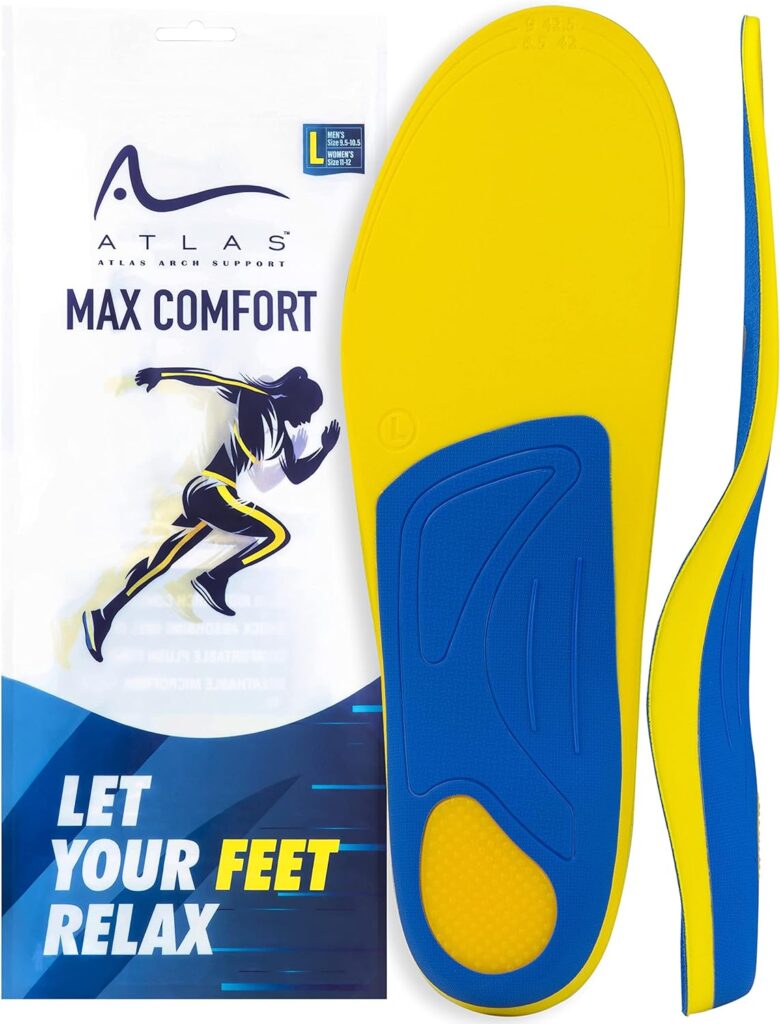
How Insoles Work
Structural Support
Insoles serve as foundational supports for the feet, particularly focusing on the arches. For individuals with different arch types—low, medium, or high—these inserts offer customized support to accommodate varying foot structures. By reinforcing the arches, insoles help distribute weight evenly, providing stability and reducing strain on specific areas of the foot.
Alignment Enhancement
One of the primary functions of insoles is to optimize foot, ankle, and lower limb alignment. They aid in correcting irregular foot positioning, ensuring proper posture, and mitigating issues related to overpronation (excessive inward rolling) or supination (excessive outward rolling) during movement.
Shock Absorption
During activities involving repetitive impact, such as walking or running, insoles act as shock absorbers. They cushion the foot from the forces generated with each step, reducing the stress transmitted to the feet and lower extremities. This shock absorption mechanism not only enhances comfort but also minimizes the risk of injuries associated with continuous impact.
Pressure Redistribution
Insoles help distribute pressure evenly across the entire foot surface. By doing so, they diminish the formation of pressure points, especially in areas prone to heightened pressure, such as the heels or balls of the feet. This pressure redistribution alleviates discomfort and minimizes the likelihood of developing issues like calluses or blisters.
Comfort Enhancement
Significantly contributing to overall foot comfort, insoles provide an additional layer of cushioning and support. They reduce fatigue and discomfort, especially beneficial during extended periods of standing, walking, or engaging in activities that put strain on the feet.
Addressing Specific Foot Conditions
Specialized insoles cater to specific foot conditions. For instance, those suffering from plantar fasciitis, flat feet, or conditions involving foot deformities can benefit from insoles specifically designed to alleviate their discomfort and provide targeted support.
Customization for Personalized Support
Custom-made insoles are meticulously crafted to fit an individual’s unique foot structure, taking into account factors like arch type, foot shape, and existing foot conditions. This level of customization ensures tailored support and comfort, addressing individual needs effectively.
In summary, insoles perform a spectrum of vital functions, offering structural support, enhancing alignment, absorbing shock, redistributing pressure, enhancing comfort, addressing specific foot conditions, and providing customized support. They play an integral role in promoting foot health, improving posture, and mitigating discomfort during various daily activities.
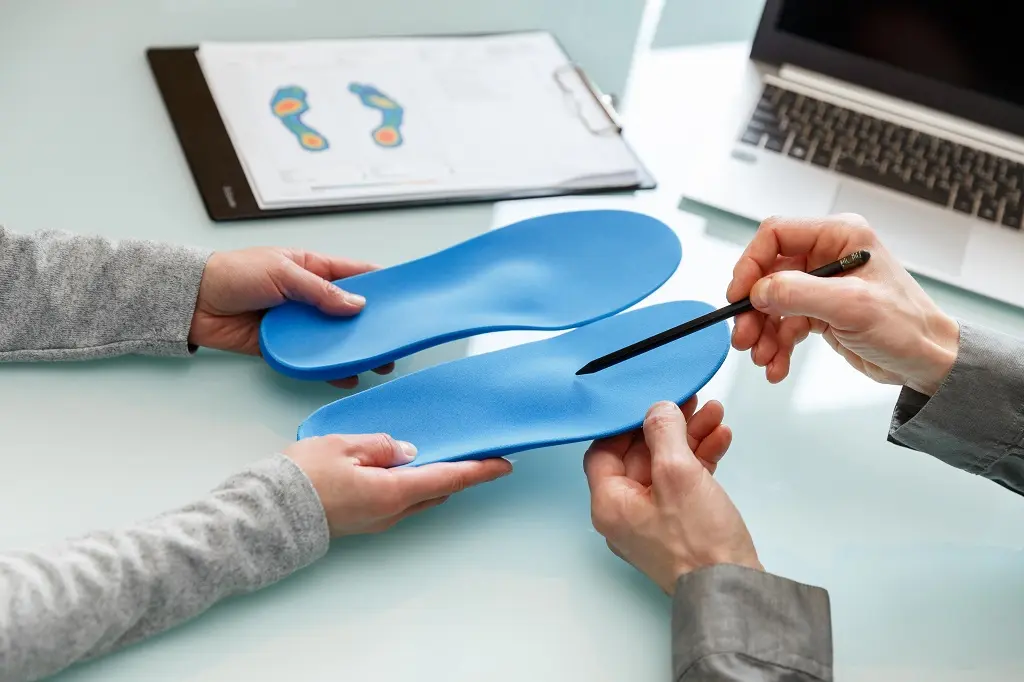
Impact on Daily Comfort
Alleviating Discomfort
Insoles are instrumental in reducing discomfort associated with various foot issues. They provide cushioning, support, and proper alignment, diminishing pain and discomfort caused by conditions like plantar fasciitis, flat feet, or overpronation. By offering targeted support, they ease strain on sensitive areas, allowing for improved comfort throughout the day.
Enhanced Stability and Balance
The stability offered by insoles significantly influences balance and mobility. By supporting the arches and distributing weight evenly, insoles enhance stability while walking or standing. This stability minimizes the risk of falls or missteps, boosting confidence and comfort during daily activities.
Minimizing Fatigue
Daily activities that involve prolonged standing or walking can lead to fatigue and discomfort. Insoles absorb shock, reduce pressure points, and provide cushioning, thereby lessening foot fatigue. This fatigue reduction allows individuals to remain active and engaged without experiencing excessive tiredness or discomfort.
Improved Posture
Proper foot alignment facilitated by insoles positively impacts overall posture. By aligning the feet, ankles, and lower limbs correctly, insoles contribute to better body alignment, reducing strain on the back and joints. This improvement in posture enhances comfort and reduces discomfort associated with poor alignment.
Enhanced Performance
For athletes or individuals engaged in physical activities, insoles can improve performance by optimizing foot mechanics. They provide stability, reduce impact-related injuries, and enhance comfort, allowing individuals to perform at their best without being hindered by foot discomfort.
Increased Daily Productivity
Comfortable feet are essential for productivity. Insoles that alleviate discomfort and promote proper alignment contribute to increased comfort levels throughout the day. This increased comfort enables individuals to focus more on tasks and activities, enhancing overall productivity.
Overall Well-being
The impact of insoles extends beyond the feet, influencing overall well-being. By addressing foot discomfort and promoting proper alignment, insoles contribute to a better quality of life. They allow individuals to enjoy daily activities with reduced pain, improved mobility, and a greater sense of comfort.
In summary, the impact of insoles on daily comfort is extensive, encompassing alleviation of discomfort, enhanced stability, reduced fatigue, improved posture, enhanced performance, increased productivity, and an overall enhancement of well-being. They play a pivotal role in enhancing comfort and facilitating a more active and fulfilling daily life.

Addressing Concerns
Effectiveness
Q: Do insoles really work?
Insoles are designed to offer support, cushioning, and alignment to address various foot issues. Studies show that properly selected and fitted insoles can significantly reduce discomfort, improve stability, and enhance comfort during daily activities.
Customization
Q: Are off-the-shelf insoles as effective as custom-made ones?
Off-the-shelf insoles provide generalized support and can be effective for mild discomfort. However, custom-made insoles are tailored to an individual’s foot structure and needs, offering personalized support and addressing specific conditions more precisely.
Compatibility
Q: Can I use insoles with all types of shoes?
In most cases, insoles are adaptable to various shoe types, but certain footwear may need specific accommodations for insole fitting. Checking the compatibility of insoles with your shoes or consulting with a specialist ensures the best fit and function.
Longevity
Q: How long do insoles last?
The lifespan of insoles varies based on usage, materials, and maintenance. On average, they can last several months to a few years. Regularly replacing worn-out insoles ensures continued effectiveness and comfort.
Discomfort
Q: Will insoles be uncomfortable initially?
Adjusting to new insoles might cause slight discomfort initially as your feet adapt to the changes in support and alignment. Gradually increasing wear time can help your feet acclimate to the insoles more comfortably.
Medical Consultation
Q: Do I need a doctor’s prescription for insoles?
Over-the-counter insoles are available without a prescription and can be suitable for general support. However, for customized or specific conditions, consulting a healthcare professional like a podiatrist or orthopedic specialist is advisable to ensure appropriate selection and fit.
Maintenance
Q: How do I clean and care for insoles?
Following manufacturer guidelines for cleaning and maintenance is essential. Most insoles can be cleaned with mild soap and water, and air-dried. Avoiding exposure to excessive heat or moisture prolongs their lifespan.
Addressing these concerns about effectiveness, customization, compatibility, longevity, initial discomfort, medical consultation, and maintenance helps individuals make informed decisions about using insoles for their foot comfort and health.
Expert Recommendations
Professional Assessment
Consult a Specialist
Seeking advice from a podiatrist, orthopedic specialist, or footwear professional is crucial. They can assess your foot structure, gait, and any existing conditions to recommend the most suitable insoles tailored to your specific needs.
Correct Fit
Ensure Proper Sizing
Insoles should fit snugly inside your shoes without being too tight or loose. Properly fitted insoles provide optimal support and comfort, enhancing their effectiveness.
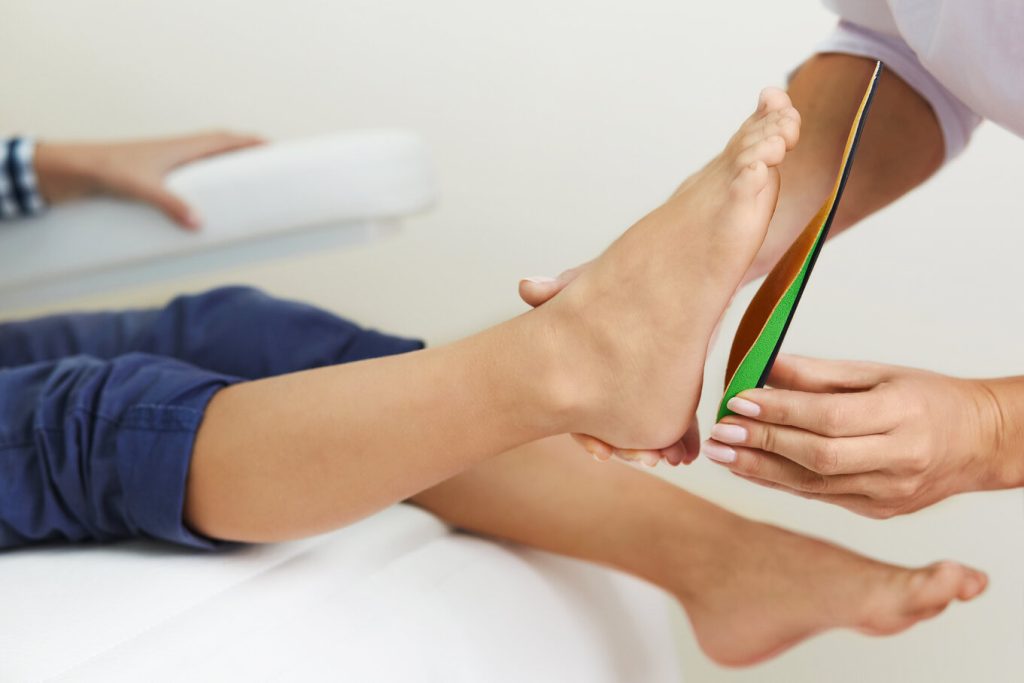
Arch Support
Consider Arch Type
Understanding your arch type—low, medium, or high—is vital. Choosing insoles that match your arch type ensures proper support and alignment, contributing to improved foot health.
Material Selection
Choose Quality Materials
Selecting insoles made from high-quality materials—such as foam, gel, or rigid plastic—ensures durability, comfort, and the right level of support for your feet.
Customization
Opt for Custom-Made Options
For specific foot conditions or unique foot shapes, consider custom-made insoles. These provide tailored support and address individual needs more precisely than off-the-shelf options.
Gradual Adjustment
Ease into Use
New insoles might require an adjustment period. Gradually increase wear time to allow your feet to adapt comfortably to the support and alignment provided by the insoles.
Regular Replacement
Replace Worn-Out Insoles
Monitor the condition of your insoles regularly. Worn-out insoles lose effectiveness and may not provide adequate support. Replace them periodically to maintain foot comfort and health.
Proper Care
Follow Maintenance Guidelines
Adhere to manufacturer guidelines for cleaning and maintenance. Proper care extends the lifespan of insoles, ensuring continued effectiveness and hygiene.
Combine with Proper Footwear
Choose Supportive Shoes
Pairing insoles with supportive footwear enhances their effectiveness. Select shoes that accommodate the insoles and offer additional support for overall foot health.
Monitor Foot Health
Pay Attention to Changes
Regularly assess your foot health. If you experience persistent discomfort or new issues while using insoles, consult a healthcare professional for evaluation and guidance.
Following these expert recommendations ensures that insoles are chosen, used, and maintained effectively to optimize foot comfort, support, and overall well-being.
Conclusion
Orthopedic insoles for flat feet offer a transformative solution, providing targeted support and relief from discomfort associated with this condition. By understanding the key features, benefits, and considerations, individuals can make informed choices to improve their foot health significantly.
FAQs
Q: Do orthopedic insoles weaken natural foot strength? A: No, orthopedic insoles offer necessary support without compromising natural foot strength.
Q: How long does it take to adjust to orthopedic insoles? A: It’s advisable to allow a gradual adaptation period for comfort and effectiveness, typically a few weeks.
Q: Are orthopedic insoles only for flat feet? A: While designed for flat feet, these insoles can benefit individuals with various foot conditions seeking proper support and alignment.
Q: Can orthopedic insoles completely cure flat feet? A: While they alleviate discomfort and provide support, they may not completely cure flat feet but can significantly improve comfort.
Q: What materials are best for orthopedic insoles? A: Materials that offer cushioning, shock absorption, and durability are ideal for orthopedic insoles.
Q: How often should orthopedic insoles be replaced? A: Depending on usage and wear, it’s recommended to replace them every 6-12 months for optimal support.




